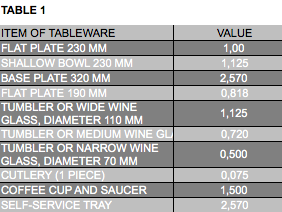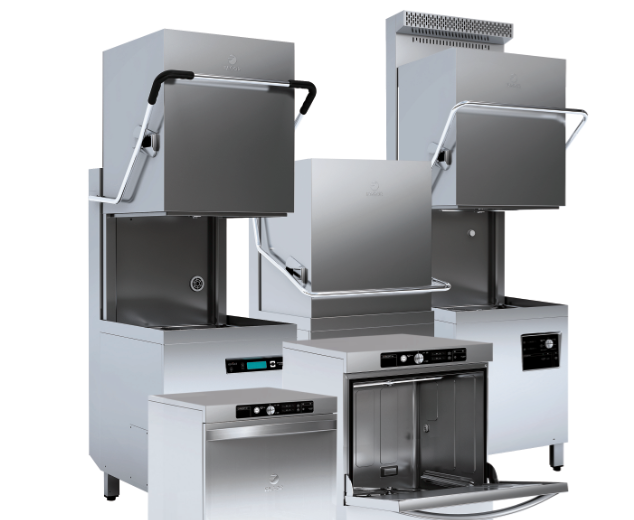When fitting-out a kitchen with a dishwashing system, certain factors should be considered to ensure that the selected model is the most suitable and that it meets the necessary production requirements. Assuming that the measurements for the washing area are correct and sufficient for installing the necessary appliances, the following factors should be considered:
- Type and category of restaurant or premises.
- Average number of covers at peak times and time available for washing up.
- True and theoretical performance of the dishwashers.
1. Type and category of restaurant or premises
If you know the type of business or customer for whom the machine is intended, and the category of the restaurant, it is possible to obtain some of the more significant data used in defining the type of machine to be offered. On the one hand, you can obtain the average size of tableware to be used at each service, and on the other hand you can define the required machine dimensions in order to take the larger pieces of the tableware. The average production of a dishwasher is based on a standard plate with a diameter of 230 mm. Dishwasher production tables are based on calculations using this type of standard plate. To calculate the required machine, each article of tableware must be numerically converted to a number of standard plates measuring 230 mm. in diameter The different capacities of baskets measuring 500 x 500 mm to take the various pieces of tableware should be considered. There are baskets especially for plates, glasses, cutlery and trays, and multi-purpose baskets which will take any article, but without the specific details required or needed for a good wash.

Based on the capacity of a standard plate basket (500×500 mm), it is possible to draw up a table of equivalences taking a standard plate as the basic size. For example, a basket can take 18 plates or 36 narrow glasses with a diameter of Ø 70 mm. Therefore one plate is equivalent to two narrow glasses, or equally, one narrow glass is equivalent to 0.5 standard plates. Thus we obtain a table that allows you to convert all the articles in the tableware, glassware and cutlery into standard plates, which are used to calculate the technical production of the dishwashers. If the premises for which the calculations are to be made does not have all the specific data, a table can be used that lists the approximate quantities of each article in the tableware, depending on the type of establishment. The following table gives an example of the quantities mentioned:

2. Average quantity of covers at peak times and average length of wash time
Normally the wash time in the afternoon is higher than in the evening, so that in the case of businesses serving lunches and dinners, the time available at night will be the time established as the maximum wash time. Health and safety regulations require that the dishes are washed within two hours of being cleared from the table.
3. True and theoretical performance of the dishwashers
In practice, in addition to the wash cycle time, it is necessary to consider the time taken to open the door, remove the basket, place another basket in the machine, select the programme, and add washing products in the case of manual dosage Depending on the personnel available for these tasks, the correction factor to be applied to the theoretical production in order to calculate the true production will vary. However it is normally recommended that the true production of the machine does not exceed 67% of the given theoretical figure (or equally, apply a correction factor of F=1.5).
- True production = (Theoretical production) / F
Calculating the true requirements of an establishment
After considering the factors explained above, the required production of the dishwasher can be calculated using the following formula:
- True production = (N x S) / T
Where:
- N = average number of covers (lunch and dinner)
- S = standard value in plates/hour per cover or diner, depending on the type of premises
- T = time available in hours for washing tableware
Considering that in the commercial tables, the value given is the theoretical production, to adapt to this and find the most suitable model for the case in question, the formula derived from the above is used in the calculations:
- Theoretical production = True production x F



Follow us